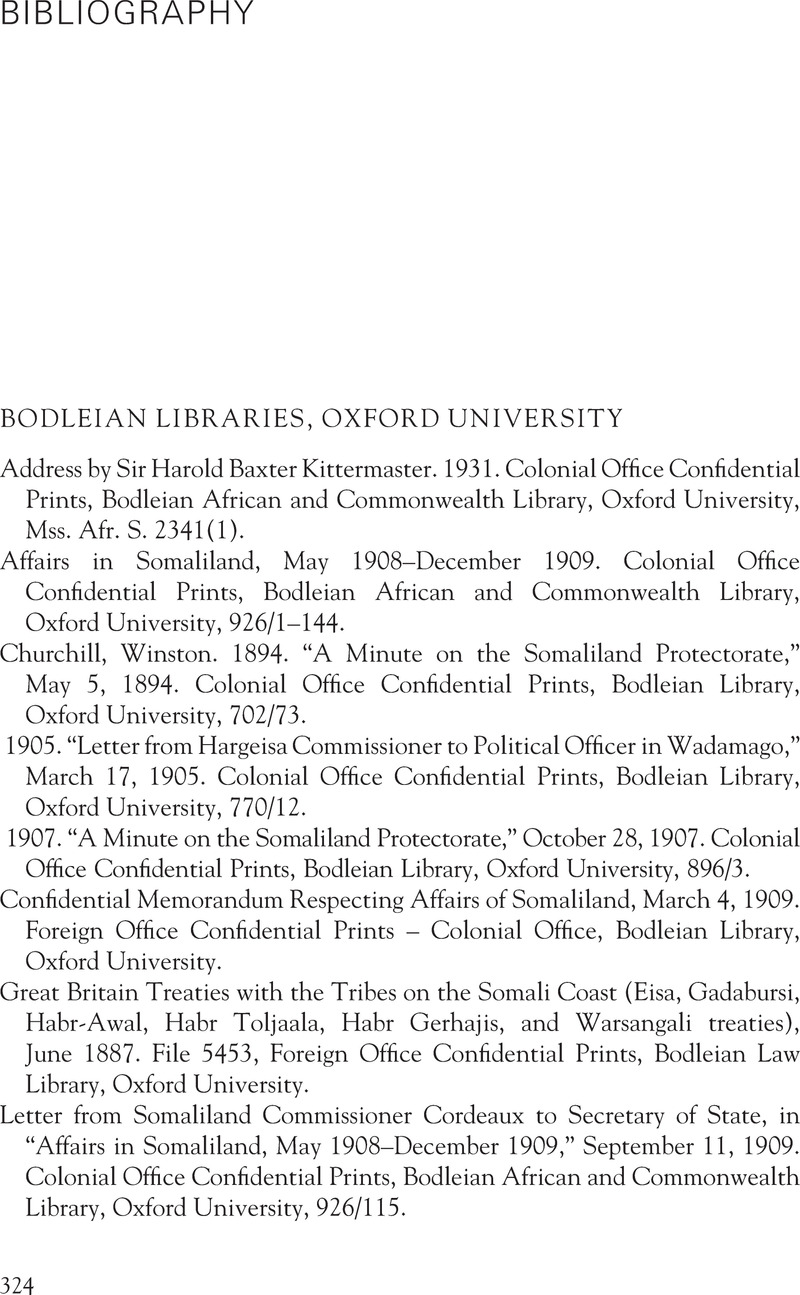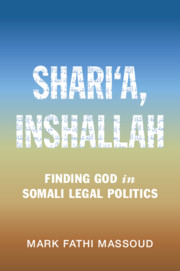Book contents
- Shari‘a, Inshallah
- Cambridge Studies in Law and Society
- Shari‘a, Inshallah
- Copyright page
- Dedication
- Contents
- Figures, Maps, and Tables
- Preface
- Acknowledgments
- Note on Places and Languages
- Additional material
- Introduction
- Chapter one Embracing Shari‘a and the Rule of Law
- Part I Colonialism and Its Aftermath, 1884–1991
- Part II Struggles of a Broken Nation, 1991–2021
- Book part
- Bibliography
- Index
- Cambridge Studies in Law and Society
- References
Bibliography
Published online by Cambridge University Press: 13 May 2021
- Shari‘a, Inshallah
- Cambridge Studies in Law and Society
- Shari‘a, Inshallah
- Copyright page
- Dedication
- Contents
- Figures, Maps, and Tables
- Preface
- Acknowledgments
- Note on Places and Languages
- Additional material
- Introduction
- Chapter one Embracing Shari‘a and the Rule of Law
- Part I Colonialism and Its Aftermath, 1884–1991
- Part II Struggles of a Broken Nation, 1991–2021
- Book part
- Bibliography
- Index
- Cambridge Studies in Law and Society
- References
Summary

- Type
- Chapter
- Information
- Shari‘a, InshallahFinding God in Somali Legal Politics, pp. 324 - 350Publisher: Cambridge University PressPrint publication year: 2021



